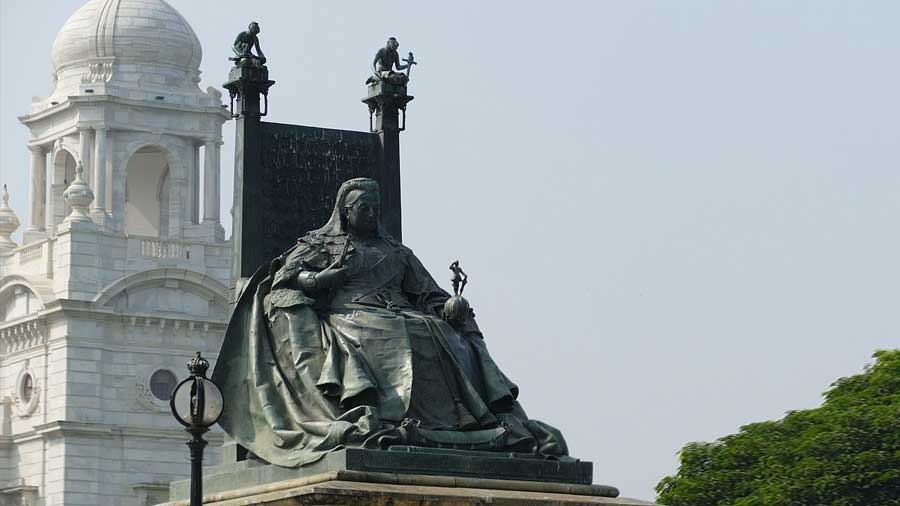This was something he had never been able to tell anybody. Every time he visited her, he fell out of love a little more. She must have figured that out — it’s still a mystery how — because, one night, she sent the black fairy to him to make peace. And the black fairy woke him from his dreams, led him out of the window into the night, flew him on her wings over the sleeping city, above the ochre streetlights and through the lion gate, to where the Empress sat.
The Empress beckoned the little boy close. “Why have you stopped loving me?” she asked him.
She looked huge, almost amorphous in the darkness, imperiously benignant.
The boy hesitated, then decided to get it off his chest. “I get bored coming here,” he replied.
“They take so long to look at the pictures, the statues, at everything….”
The Empress was smiling now. “Who are ‘they’?”
“My parents, my uncle, everyone who brings me here with them. And then they forget that I am with them.”
“Oh, the grown-ups,” she laughed. “You too will grow up one day.
She was looking different. Kind of melting away. Her voice too was changing. Hollowing out in the dark. It had become cold too. He looked around for the fairy. She wasn’t there.
The fairy had gone back to her place above the dome — just as the boy would go back to his dreams. But the words of the Empress stayed with him. Even when he grew older. Like her marble home has got older.
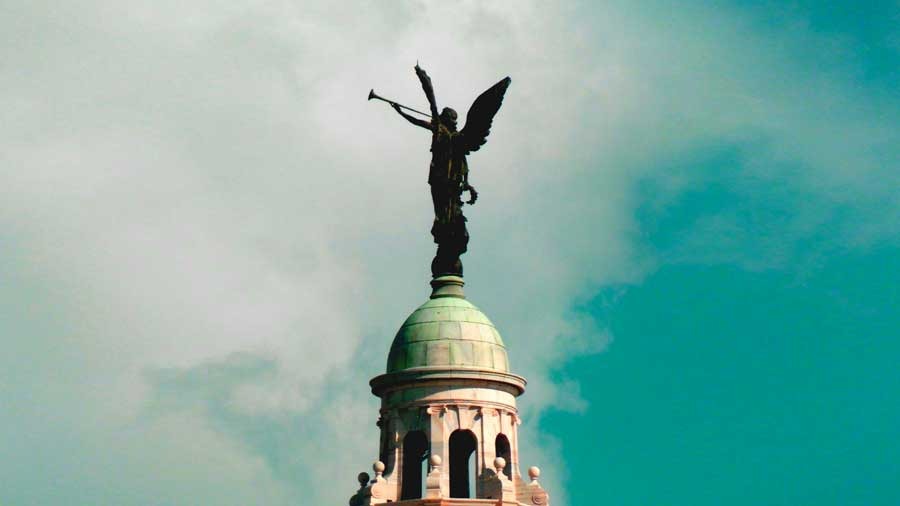
The Angel of Victory atop the monument Nomadistic
Victoria Memorial turned 100 this year, quietly, inevitably, as all historical monuments do when they mark a milestone, its white imposing structure one of the most recognisable landmarks in the city. People still come, at least they did before the pandemic changed everything, pulled more perhaps by the magnificent edifice than the history it holds inside its chambers.
There’s a popular saying people often quote; that is, change is the only constant. But some constants don’t change, they remain immaculately immobile, like a point of reference, as a reminder and remembrance. So it is with the Memorial.
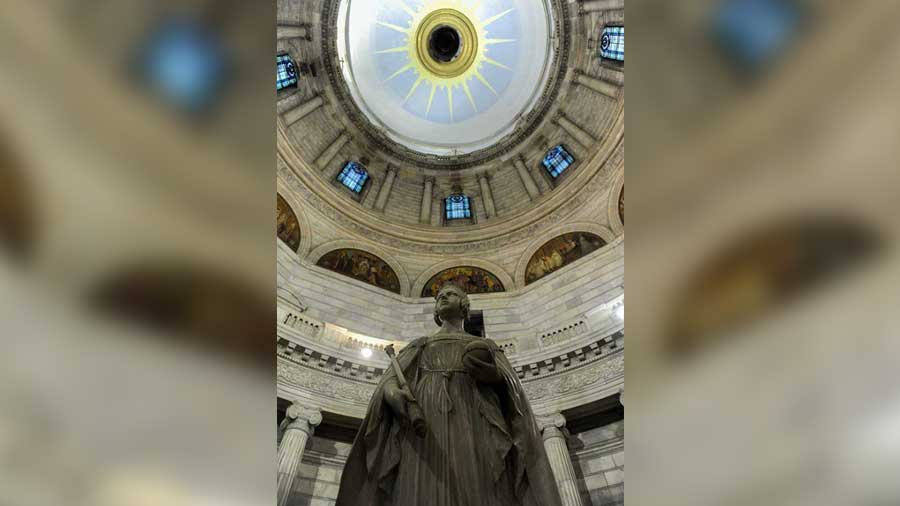
The dome of the Memorial with the Empress beneath Amit Datta
Here’s a brief history before we go further. Victoria Memorial was formally opened to the public in the year 1921, a decade and a half after construction started. Victoria, Queen of the United Kingdom of Great Britain and Ireland, and Empress of India, had died in January, 1901, after a long reign that saw Britain’s possessions on the Indian subcontinent come under the direct control of the British Empire.
Lord Curzon, then Viceroy of India, proposed a memorial to the late monarch. It was to be built in Calcutta (Kolkata now), then capital of the Jewel in the Empire’s Crown. Five years later, the then Prince of Wales, the future King George V, laid the foundation stone for the building. The Memorial, set in sprawling gardens, was to be more like a museum, with portrait galleries, statues, sculptures and exhibits of war; a multi-floor, multi-chamber vault with “the lessons of history” that would draw both “European and Native”.
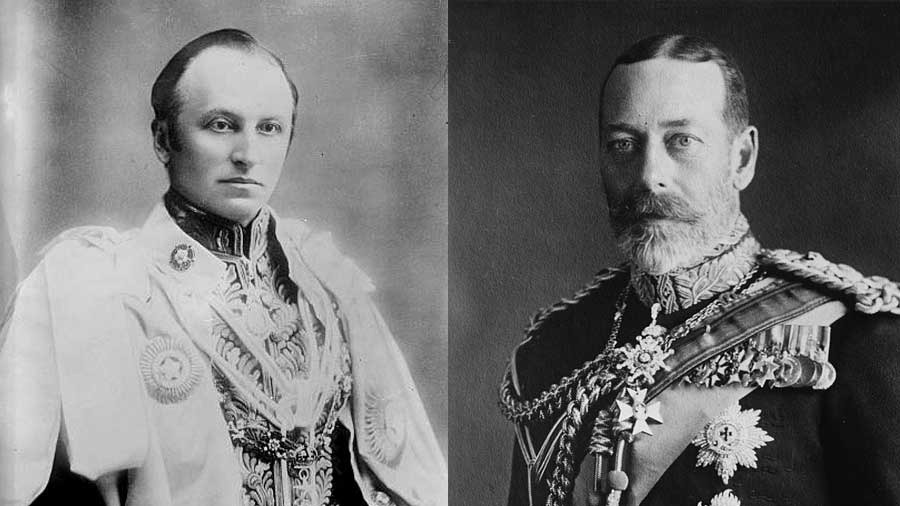
(Left) Lord Curzon, then Viceroy of India, had proposed the memorial to the late monarch; (right) the then Prince of Wales, the future King George V, had laid the foundation stone for the building U.S. Library of Congress
Had Curzon spoken today, he would have been called out mercilessly for his choice of words — Wikipedia has the exact quote for those who are interested — but there was no social media then. In any case, political correctness would catch on much later. Anyway, coming back to the “lessons” bit, they implied, naturally, the dominant history of the British empire, then still in its high noon. That high noon would be extended with victory in the Second Boer War a year later, though the tide of the Empire’s military fortune would eventually turn.
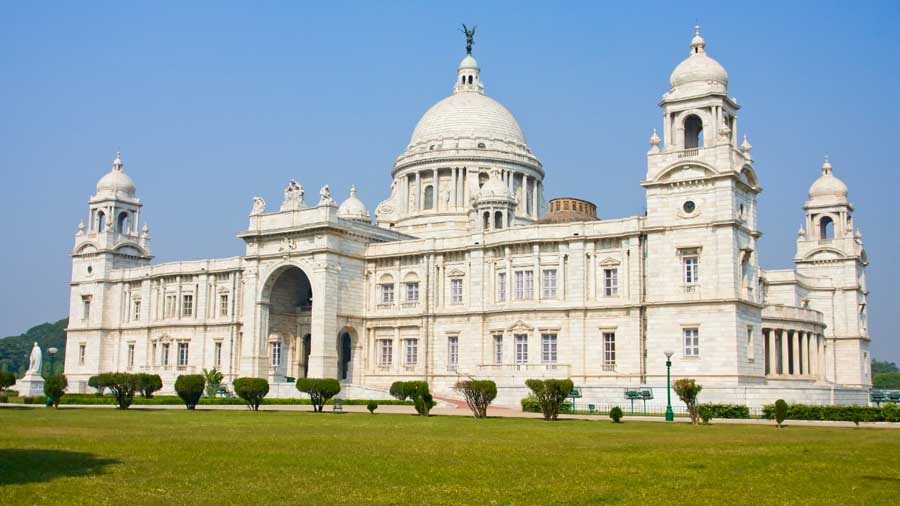
Victoria Memorial was formally opened to the public in 1921, a decade and a half after construction started Shutterstock
A more balanced appraisal has come of late. “As the Victoria Memorial turns 100 this year, I renew my call to convert it into a Museum of Colonialism, revising its exhibits to show a fuller picture of the Raj, including its exactions & atrocities too,” writer-politician Shashi Tharoor would say in a tweet early this year.
It was necessary, if belated, assertion on behalf of the once subjugated but back then, to a boy growing up in the city in the seventies, the Memorial was hardly history and almost totally playground; cricket bat and wickets in the car boot. Even better if you made a few friends for a game on the Maidan greens. And lunch in a wicker basket. That was the attraction of Victoria Memorial. Had the elders understood that, they wouldn’t have dawdled so long inside.
And then there was the black bronze fairy — the figure of the Angel of Victory — the mysterious revolving shape at the top. “Does it really fly away at night and sing little children to sleep?” the boy had asked his mother one day.
“Only obedient children,” she had replied, leaving him a bit worried.
Anyway, that doubt had been settled. The Empress had herself sent the fairy to him. But how on earth she knew, he never found out.
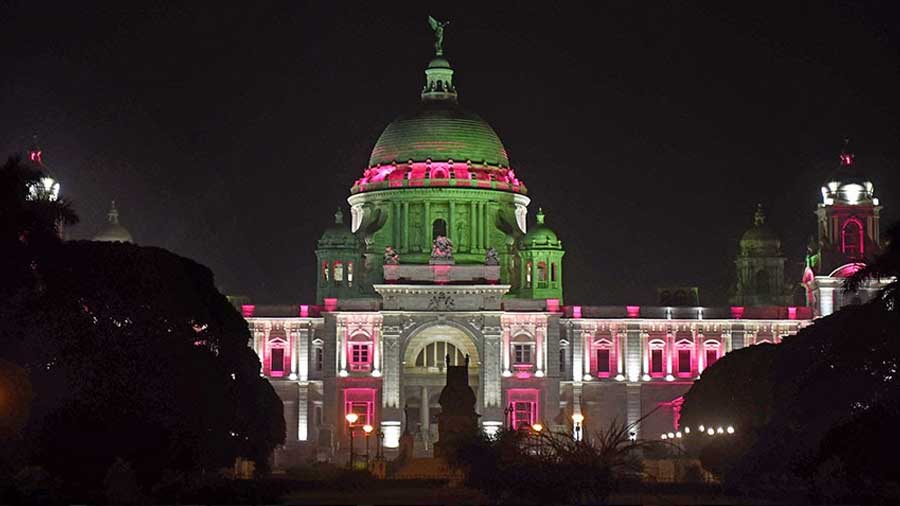
The memorial lit up at night Amit Datta
But, as the Empress had foretold, he did figure out something as he grew older: what took the elders so long inside the Victoria Memorial Hall. It was the hypnotic appeal of history as art, he would realise. Somewhat like John Keats’s Grecian urn. If the urn was like a “Sylvan historian”, a link between the poet’s present and the long-dead artist who had fashioned the urn, a tour of the Memorial Hall provided a proxy journey into the past. Proxy but one that could be revived and lived again and again because art, invulnerable to history’s ‘Hamelin’, transcends time.
In its one hundred years of existence, Victoria Memorial has also been a silent observer of a changing landscape. New structures have come up, landmarks of modernity like The 42, the towering residential skyscraper in the city’s business district.
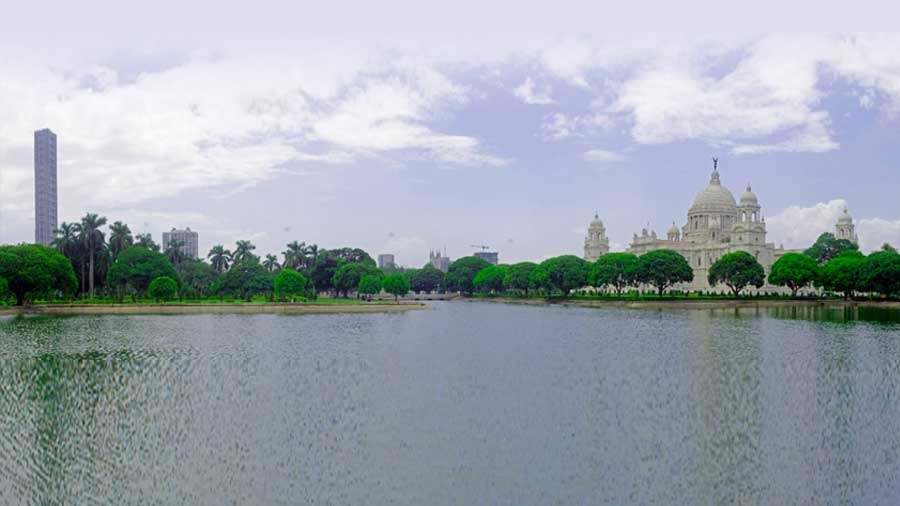
Victoria Memorial has been a silent observer of a changing cityscape — witnessing landmarks of modernity like The 42 (left) come up Rangan Datta
What the new structures have sought to attain in the skies, Victoria Memorial dominates closer to the ground. The collective psyche of a city.
If only the black fairy had not limited its visit to little boys.
